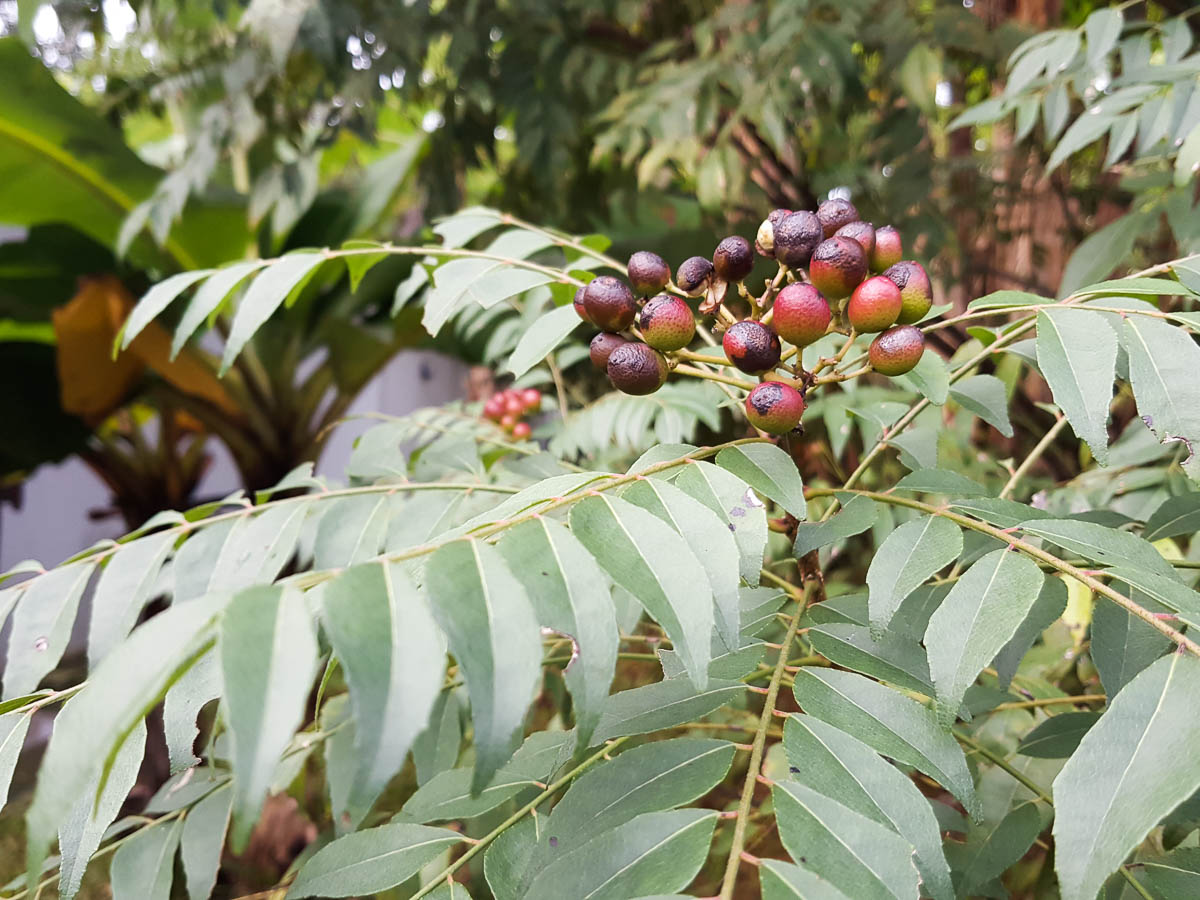Curry Leaf Plant
Curry Leaf Plant (Murraya koenigii)
Other common names: Curry Leaf Tree, Daun Kari, Indian Curry Tree, Curry Bush, Karapincha, Karwa Pale, Garupillai, Kerupulai, 咖哩叶, 调料九里香, 麻绞叶

A staple in many Southeast Asian gardens, Curry Leaf Plants thrive in full sun gardens and can quickly grow up to 2.5m in height. Their leaves produce highly aromatic oils that give curry its distinctive taste, and can be dried and powdered, fried, or boiled.
A large perennial crop, curry leaf trees are usually planted in true ground.
Curry leaf plants are part of the Rutaceae or Rue family, which includes other popular edible plants like Lime and Limau Purut.
Sun and soil needs:
Curry Leaf Plants need at least 6 hours of direct sunlight to flourish. They can also grow in 4-6 hours of direct sunlight or in more than 6 hours of indirect sunlight, but the plant will be leggy and less lush.
Plants do best in pots with loamy soil at least 30cm deep, or in true ground.
This tree can grow up to 2.5m high, but it can be pruned down to a around 1.5m for easy maintenance.
Sowing seeds:
Seeds can be sown directly into pots or the ground around 30cm-1m apart. Lightly water the soil until damp, once a day. Seeds should sprout around two weeks.
Growing:
Curry trees are rapid growers and will need regular pruning to be maintained at manageable height. Because they already grow rapidly, they generally do not require fertilising, but a use of a high nitrogen fertiliser after hard pruning will encourage the plant to bounce back quickly.
Harvesting:
Plants can be harvested for leaves at any time. Regular harvesting will encourage bushier growth and will keep the plant at a manageable height.
Mature, black fruits can be harvested for seeds. Sow seeds from ripe fruit immediately after harvesting as they tend to rot quickly.
Propagation:
Curry Leaf Plants can be grown from seed or propagated via woody stem cuttings. Woody stem cuttings should be dipped in rooting hormone before being potted up in rooting media.
Common problems & solutions:
Like most strong-smelling herbs, this plant is relatively resistant to pests and disease if kept healthy.
This plant is vulnerable to fungal diseases that form leaf spots during the wet season or when the plant is overgrown. Increase air circulation with regular pruning and remove affected leaves to reduce the spread.
Aphids, Mealy Bugs, and Scale Insects often infest the plant if it has underlying problems like waterlogging. Mechanical pest control methods like pruning the infested parts are the best methods for managing these pests in the short term, but resolving the underlying problem will prevent them in the long term.

